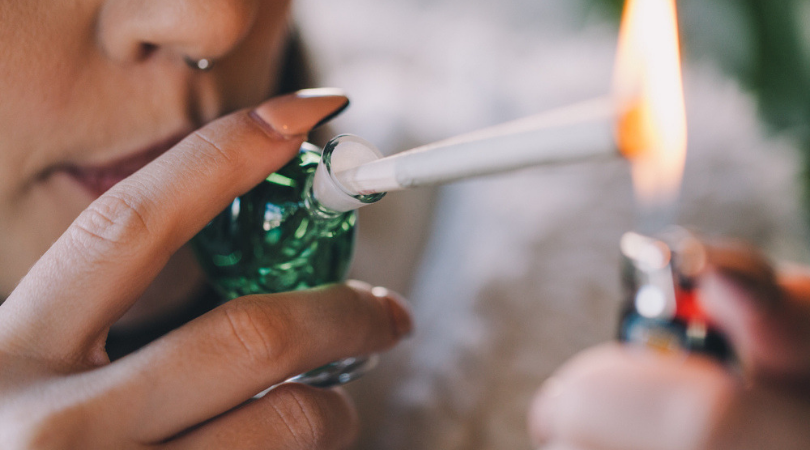Bubblers, bongs, and pipes create ripe opportunities for weed smokers to experiment with different consumption methods.
Each of these devices comes with unique features and offers a slightly different experience. They can be used by both recreational and medical cannabis users alike to suit different needs.
Bubblers are less popular than bongs or regular pipes, but that doesn’t mean they’re any worse. In fact, a decent bubbler can become a long-time companion, largely thanks to its portability and additional filtration.
This article will help you get familiar with different types of bubblers and how to use them.
Let’s start with the basics.
What Is a Bubbler?
A bubbler is what you get when you cross a pipe or bong. In essence, bubblers are smaller, handheld bongs. They might not offer you the most badass rips in the world, but if you need a portable pipe with additional water filtration, then you’ve found yourself a keeper.

When, where, and how the bubbler pipe was first created is shrouded in mystery, just like the man behind the invention. However, when you take a look at how pipes evolved into bongs, the bubbler pipe seems like a natural crossover.
What Parts Does a Bubbler Consist of?
The anatomy of a bubbler pipe is simple. The device consists of the following elements:
- Mouthpiece
- Bowl
- Stem
- “Water tank”
The stem is built around the bowl to hold a small amount of water, which cools and filters the smoke before inhalation. This ensures clean and smooth hits.
While at their core bubblers rely on the same principle — using water for filtering smoke — you may come across different types of this device.
Bubblers come in six basic models. Each one has its own advantages, and you’ll probably find yourself switching between one unit and another to find a perfect match.
Below we briefly go over each type of bubbler:
How to Use a Bubbler
Using bubbler is super easy.
Start by willing the water tank with some cold water (the colder, the tastier your hits). Then, grind up your favorite strain as you would with a regular pipe or bong and load the bowl of your device.

If your bubbler comes with a carb cap — it’s all the better. If not, cover the carb with your thumb and place your mouth over the mouthpiece.
Now all you need to do is light the bowl and gently draw the smoke into the chamber and inhale. Don’t take sharp breaths; instead, try to pull the smoke slowly but consistently so you don’t start coughing.
Remove your thumb from the carb and then inhale the rest of the smoke from your bubbler.
That’s it — enjoy!
The Pros & Cons of Using a Bubbler
Like all smoking devices, bubblers have their pros and cons. Here’s what to expect from a bubbler when wheying the good and the bad:
|
Pros |
Cons |
|
|
What’s the Average Cost of a Bubbler?
The price of a bubbler varies widely between different models. You can pay from less than ten dollars to more than $200 for a high-grade bubbler. This can make your choice pretty confusing.

Essentially, there are five major characteristics that determine the cost of a bubbler:
Don’t get us wrong, you can get a quality bubbler for under $25 — even those made of borosilicate glass. Generally speaking, you should be able to get a decent-performing bubbler pipe with a cool design for somewhere between $25–$60.
If the bubbler is made of lab-quality glass and you’re looking for something with a unique style and craft design, you’re going to spend more cash. But at the end of the day, a craft bubbler pipe it’s probably a safer choice.
Do you use bubblers? If so, what type is it and how much do you spend on a bubbler on average? Give us a shout in the comment section below!





